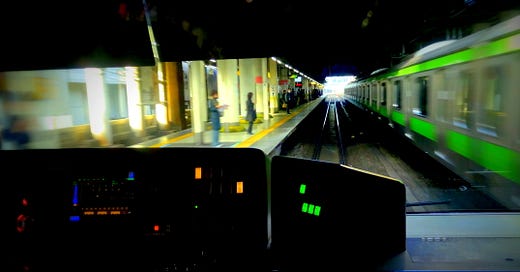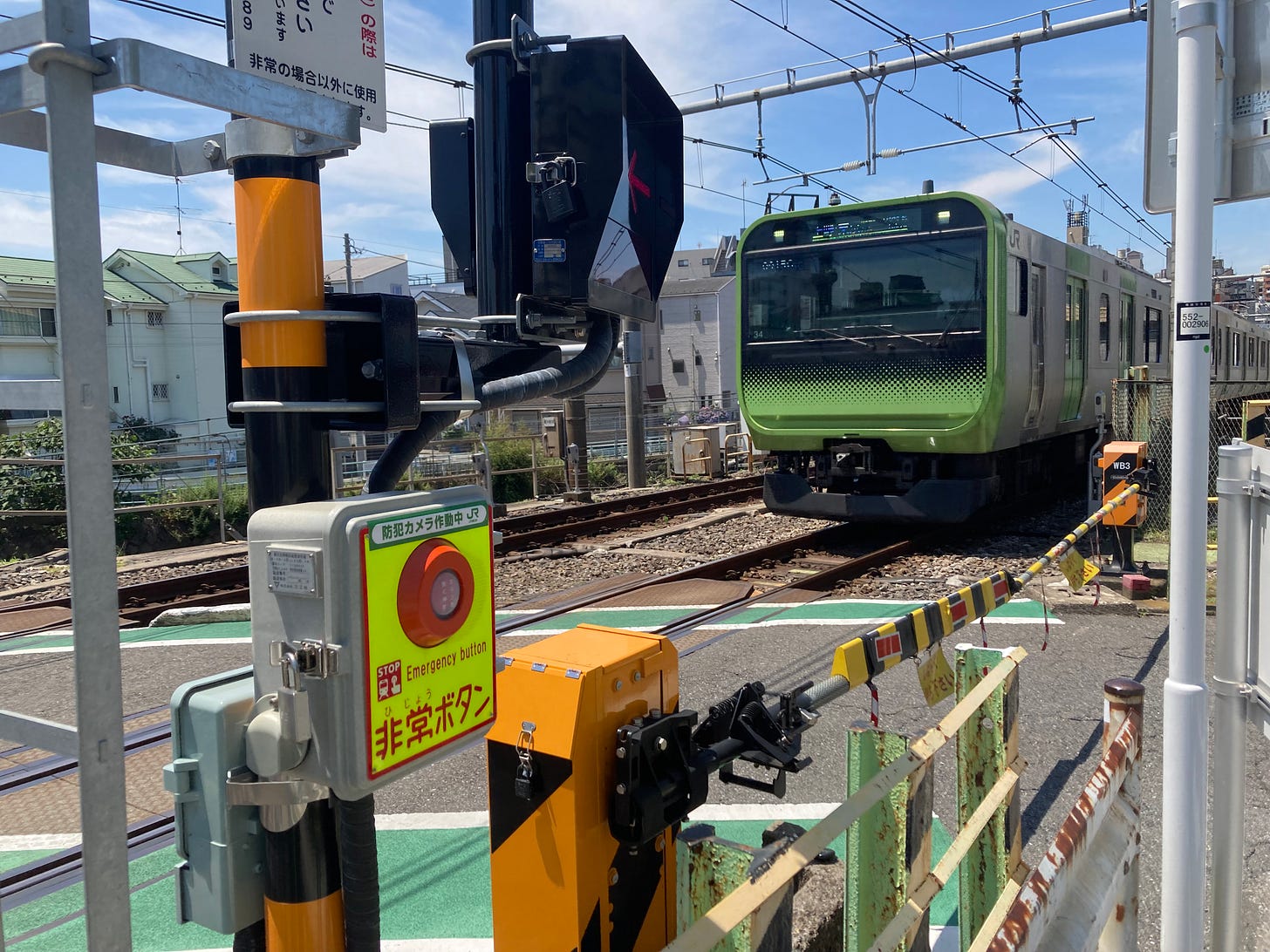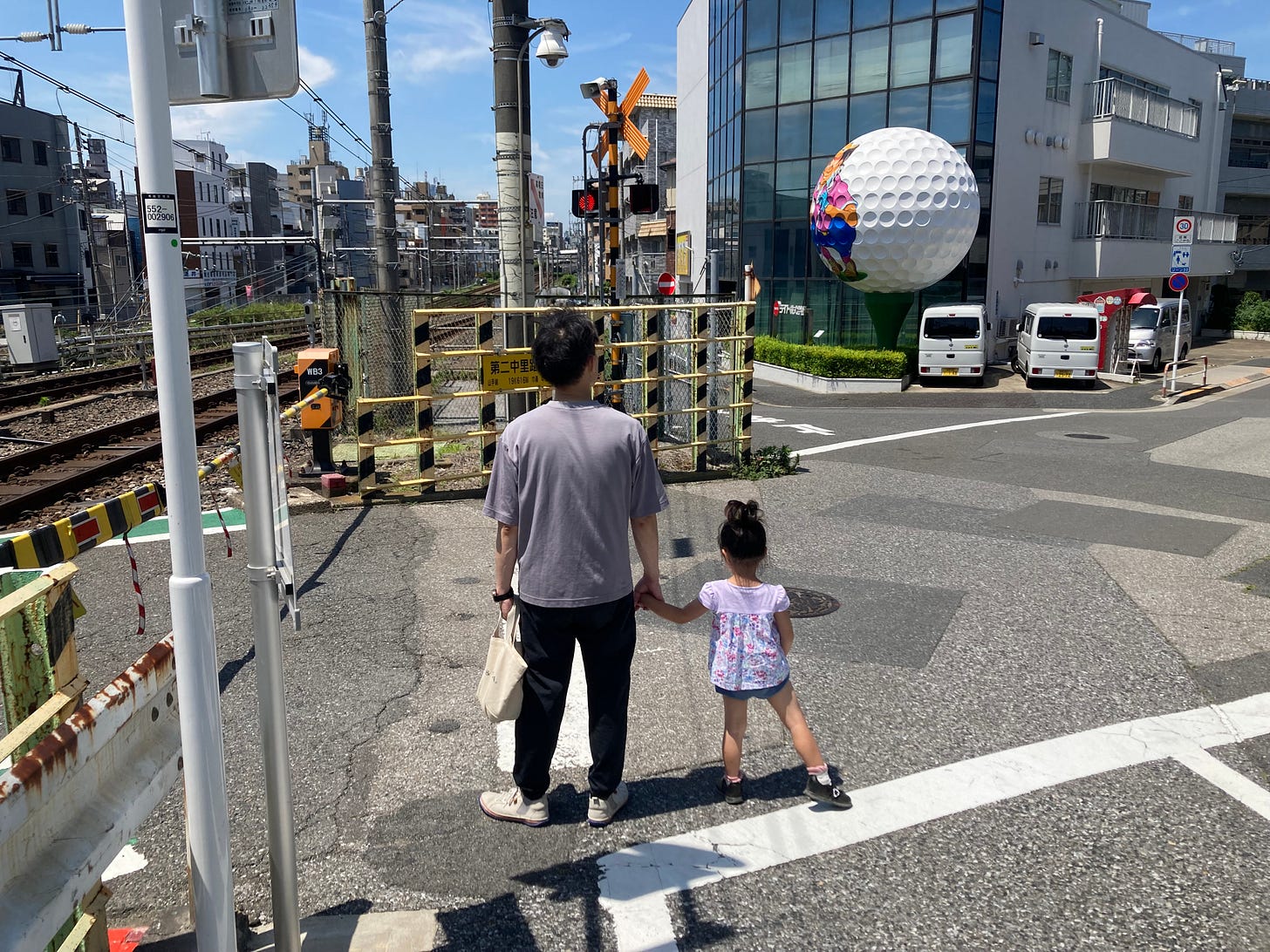I have put together some interesting trivia about Tokyo’s most famous railway line.
Male or female?
The JR Yamanote Line runs through the center of Tokyo. The loop is made of an inner and outer circle, but first-timers may lose track of which direction they are going. In those cases, there are a few easy ways to tell them apart.
The outer loop trains run clockwise, the inner loop trains, counterclockwise. For instance, if you board at Shibuya Station, the outer circle heads north to Shinjuku, while the inner circle goes south. Think about that like driving a car on the left side of the road. (Japan adopted the driving system from the UK.)
Pay attention to the automated announcements on the platform. Not what they say, mind you, but their voice: the inner circle has a female voice, the outer circle is male. This distinction, by the way, can be found on other lines too whenever the inner and outer circles face each other. Tokyoites are busy people; they are always in a hurry and hate to wait too long for a train. By carefully listening to the announcements (for example, while approaching the platform from a distance) they can predict in what direction the next train is going. It may sound crazy, but it works. I do it myself.
Look at the platform doors. The platform door on the Yamanote Line has a green stripe. The inner loop has one stripe while the outer loop has two. Not all stations have installed those stripes yet, but it is good to remember.
Yamanote or Yamate?
In kanji, the name of the line looks like this 山手線.
山 yama (mountain)
手 te (hand, or side)
線 sen (line)
The problem is that 山手 can either be read as Yamanote or Yamate.
This has caused misunderstandings and angry complaints in the past.
The September 19, 2000, edition of the Asahi Shimbun, one of Japan’s main dailies, carried the recollections of Yanai Nobuo, who later became the president of the Japan Transportation Association.
According to an article titled "Yamate Line: Dropping the 'No' caused a lot of criticism," after the war, GHQ (General Headquarters of the Allied Powers) requested that the line name be written in Roman letters. In that occasion, the "No" was dropped and the line name read YAMATE. The “No” was finally put back in 1971 to everyone's relief.
Japanese of a certain age still remember how Yodobashi Camera, a national consumer electronics retail chain, had to change the way the name of the line was pronounced in the popular theme song.
In 1993, the familiar lyrics that once began with "The round green Yamate Line..." were changed to Yamanote.
Don’t you believe me? Check out these two cute videos (they are very short). In the first one, from 1978, the lyrics say Yamate-sen (at 3-4 seconds into the video).
In the second one, 4-5 seconds from the start, they sing Yamanote-sen.
We also have and English CM from 1986.
High and low
The name Yamanote, by the way, is part of the traditional distinction between Tokyo’s east and west sides.
The east side, called shitamachi (low city) refers to the low-lying, marshy districts closer to the sea that were traditionally inhabited by the working classes.
The yamanote, on the other hand, refers to the western hilly side, the home of the samurai class and later the middle class.
This means that the stations on the western side of the loop are located on higher ground.
Onoda Shigeru of the Railway Technical Research Institute is an expert on the history of railways and has written books such as Tokyo Railway Heritage. He owns many old documents showing longitudinal sections of the Yamanote Line. These diagrams from when the line was built detail the distance, height, and gradient of the tracks.
According to the longitudinal section, the station with the highest elevation is Yoyogi at 39.2 meters (left or western side of the loop). The lowest is Shinagawa at 2.9 meters (the lowest station in the map above). In other words, there is a difference in elevation of nearly 40 meters. As we’ll see in a later post, Shinagawa was actually built directly facing Tokyo Bay.
If you look at the elevation, you will see that Meguro and Tabata are branching points. "The Yamanote Line is a circular line that connects the western plateau and eastern lowlands. Meguro Station and Tabata Station are exactly on the border," says Onoda.
There used to be two tunnels near those stations. Both were transition zones between the plateau and the lowlands.
Currently, there are no tunnels on the Yamanote Line.
The lone level crossing
There is only one crossing remaining along the Yamanote Line. It is called the Second Nakazato crossing and is located between Tabata and Komagome stations.
Keep reading with a 7-day free trial
Subscribe to Tokyo Calling to keep reading this post and get 7 days of free access to the full post archives.







